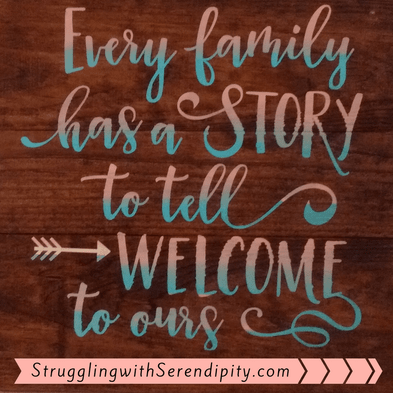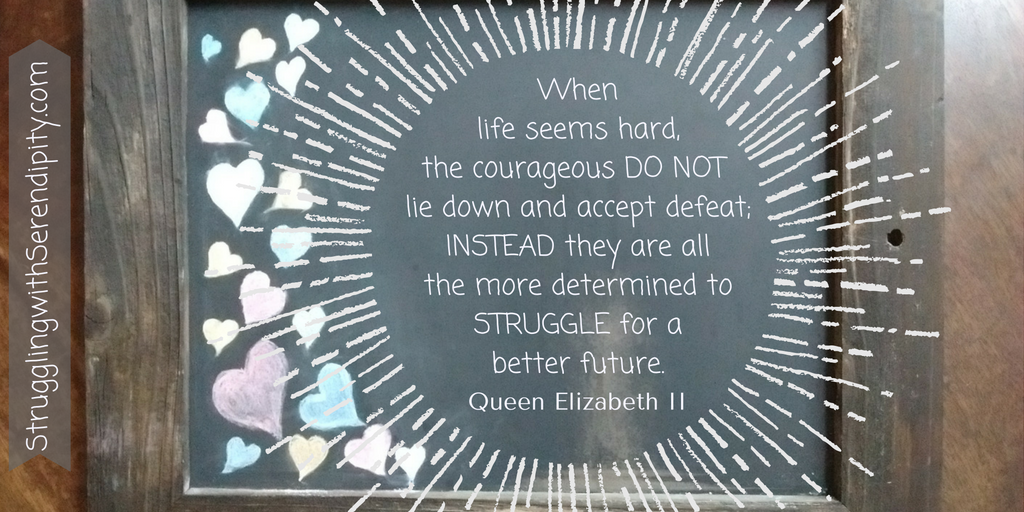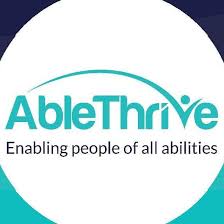 (This blog tells my family's story. To see more, click "blog" at the top of this webpage.) Beth had another sleepover on New Year’s Eve with her best friends and a fondue feast at our house. Soon after, Dr. Miller asked Beth if she would exchange emails with a new quad, and I talked to an overwhelmed mom on the phone. I listened but shared little, only how everything had changed in comparison to the initial month and how I hoped for more progress. I was sure that I wasn't a good role model for other parents. The New Year and the time beyond seemed impossibly uncertain. My concerns encompassed the global and the trivial. I was an equal opportunity worrier. Since 9/11, terrorism and nuclear weapons found their way into my nightmares. Any number of potential health problems threatened Beth—and everyone I loved. When she ventured out into the world as an adult, what kind of welcome would she find as a quad? As a toddler, she was Cinderella to Maria's Snow White. Would they find their happily ever afters? At a meeting in Toledo, Beth registered for the wheelchair games in May with the Raptors. She thought that she wasn’t good enough to sign up for the pool events, but others convinced her to try. Some of her friends also shared their earlier trips to another sports event, the National Junior Disability Championships, held every summer for kids from across the country. In February, Beth elected to have an eight-hour bladder surgery, paving the way for independence. As a result, I would no longer need to be with her every few hours. A week after she left the hospital, against my advice, she agreed to help Laraine with a new class of physical therapy students. Beth wore loose clothes to cover the temporary tubes from the surgery that protruded from her abdomen along with a small rubber bulb. Laraine teased about going easy on her during the mat exercises. When Beth sat with her hands in her lap, she wobbled less than she had at the last demonstration. Careful with the tubes, Laraine refrained from pushing hard to test her balance. Beth also shared her ponytail progress with the students, but she still couldn't complete an additional loop of the elastic to keep it in place. Not yet. At the followup appointment with the urologist, he removed all the tubes and the bulb for good, leaving bare skin and a long surgery scar below her belly button. We celebrated with a shopping trip. She had fun picking out cute underwear and a bikini swimsuit. Beth was disappointed with the doctor’s ban on swimming for six more weeks as she healed from the major surgery, not negotiable. And her first swim meet ever was just ahead.
5 Comments
 (This blog tells my family's story. To see more, click "blog" at the top of this webpage.) When snow started to fall in Ohio, I pulled my sewing bag out of the closet. I made my favorite peace doves out of felt with embroidered accents and lacy wings for Laraine, Jill, and the other therapists at Green Springs, part of our extended family. I loved how they loved Beth. I mailed Christmas cards decorated with doves, wishing for peace. For the world, for our country, and for me. John drove with Beth, Maria, and me to Toledo for the holiday party of the spinal cord injury group. Talking to other parents, I could answer the sad question of who was to blame for the car accident that injured Beth, and without crying. Progress of sorts after a year and a half. Though my guilt was still alive and well, and I quickly steered conversations away from the accident. I talked to other quads, some with serious health issues that increased my sense of foreboding. I wanted to be positive and optimistic, but I couldn’t find the way. John was in his element. He started conversations and listened to the journeys that others had traveled—and shared our family’s story. We teased him that everyone in Ohio knew about Beth’s injury. John often said that everyone has a story. Maria and Beth sat at the cool kids table with the teenagers while the younger children watched them. I heard part of a conversation about the first Harry Potter movie, The Philosopher’s Stone, in theaters since before Thanksgiving. Most of the teenagers had seen it more than once, including my girls. After our goodbyes at the party, I was relieved when Beth dosed off in the car, avoiding her anxiety about driving in the dark. Her worries were specific and situational, such as tornado warnings and the low gas indicator in the car. Maria already had a driver’s license, so one clear Saturday afternoon, my girls went shopping at the Findlay mall. On the way home, Beth noticed the low gas indicator turn on as they entered a fifteen-minute stretch with no gas stations. She wanted to turn around and go back to the closest station. Maria tried to reason with her, unsuccessfully, and they both arrived home frustrated. Thankfully, the conflict was soon forgotten. It was beginning to look a lot like Christmas—as it had been before the accident. It was easier to hold brief conversations with other parents after the holiday choir concert, always a lovely highlight of the season for me. When my kids were little, we read about Christmas traditions and their origins. Favorite songs, decorating the house and tree, making special food and cookies, playing card games, watching movies with popcorn, wrapping gifts, and making new memories to add to many lovely ones at my family's farmhouse. Sitting around the big dining room table at the farmhouse, I missed my grandma and grandpa, reminded how life can change in a moment. All the more reason to hug loved ones close. Merry Christmas and Happy Holidays to you and yours!  (This blog tells my family's story. To see more, click "blog" at the top of this webpage.) On the advice of the social worker at Green Springs, Beth and I met with a Rehabilitation Services counselor. He asked about a career. Fifteen years old, she responded that she might be a rehab doctor like Dr. Miller. Surprised, the counselor chose his words carefully and voiced objections. He doubted her physical abilities, but to be fair, he didn’t know how persistent she could be in finding ways to use her hands for fine motor tasks. Beth didn’t like being told she couldn’t do something. With the exception of standing and walking and jumping, she regarded most physical obstacles as surmountable in some way. She asked for my opinion. I shared my certainty that she could be a great doctor—after proving herself every step of the way in the face of resistance from those who would see the wheelchair first. A computer expert set Beth’s mouse to respond to the soft touch of her thumb and added DragonSpeak software. The early version required time to teach the program to recognize your individual voice. Getting comfortable with typing, she gave up on DragonSpeak. Learning how to drive peaked her interest much more. The rehab counselor guided us through the steps after Beth passed the written test for her learner’s permit. A specialized instructor from Toledo recommended specific car modifications. Driving would not be a problem. The biggest issues: getting in and out the car independently, plus storing the wheelchair. A van with a lift would easily solve those issues, but instead, Beth bought a little blue Ford Focus hatchback with insurance money from the accident. Toledo mechanics added all of the modifications. Sitting in the driver’s seat, Beth used her right hand to grip a large knob attached to an easy-to-turn steering wheel. Her other hand pushed or pulled a bar on the left side of the steering wheel to apply the brakes or to go faster. The gas and brake pedals on the floor also worked (after testing that her spasms would not be likely to hit the pedals), so I could drive it the usual way. To top it off, a big motorized box on the roof lifted and stored a folding wheelchair, the control box in the driver’s reach. “My newest challenges are learning how to drive a car with adapted hand controls,” she said, “and how to transfer in and out of the driver’s seat independently.” To go anywhere in the car by herself, Beth had to open the door to the driver’s seat, remove the foot rests, position the wheelchair, lock it, place the sliding board to bridge the gap to the car, slowly shift over, put away the sliding board, grab the remote control, release the hook from the top, take off the chair cushion, fold the wheelchair, catch the folded seat with the hook, and push the toggle to lift and store the chair. With anything less than perfection, the car would not start and Beth could not fix it. So...we rarely used the topper. I flattened one of the back seats so I could set the chair into the hatchback without folding it or taking the wheels off: one small simplification in days that felt complicated. We didn't know that Beth's little blue car would carry us far and wide, to adventures that were completely unexpected.  (This blog tells my family's story. To see more, click "blog" at the top of this webpage.) John and I rearranged the first floor of our home at Beth’s request. We moved her hospital bed out of the living room and into the small first floor bedroom where I had been sleeping. The full size bed and nightstand filled the bedroom, but left enough space for the wheelchair. I added length to the pull cord on the ceiling light so Beth could reach it. We restored our living and dining rooms as they were before the accident. With the new arrangement, I slept in the basement bedroom with John since Beth rarely needed me through the night. When she did, we both had cell phones within reach. She often stayed up later than I did to finish homework or to read, the lamp with the big switch within reach. She continued to check books off her list of the top 100 classics and highlighted ones to pick up at the library next. At a follow-up visit to the Shriners Hospital, we met more patients and parents. One discussion touched on college, but Beth was only fifteen, so college still felt far off to us. She assumed she would attend, the result of deliberate indoctrination. Since her preschool years, “When you go to college...” started random conversations at our house. Another teenager we talked to planned to attend Wright State University in Dayton, Ohio, a top choice for wheelchair users in the Midwest because of underground walkways that avoid winter weather. At Wright State, when pressure sores required a student to stay in bed, an able-bodied friend pushed his hospital bed down the street to class. Was that a good thing? Beth’s asthma symptoms had subsided since her bout with pneumonia, leading to less medicine and longer intervals between visits to the lung doctors. A Shriners doctor reviewed a new x-ray and explained that the angles of her scoliosis and kyphosis (bowing) progressed as expected, making the metal rod fusion surgery more likely in the future. We learned that the unyielding rod would hinder every possible kind of movement and add to her limitations. Despite all the odds stacked against her, Beth’s general goal shifted from more independence to complete independence, an extremely rare feat for quads. In a world where wishes came true, I wanted all of that and more for her, but the brass ring looked too high. Laraine, her extraordinary physical therapist, said, “Beth made up her mind that she would be independent from a wheelchair so she could take care of herself in a college setting.” |
Cindy KolbeSign up for my Just Keep Swimming Newsletter by typing your email address in the box. Thanks!Categories
All
Archives
November 2022
|

 RSS Feed
RSS Feed











